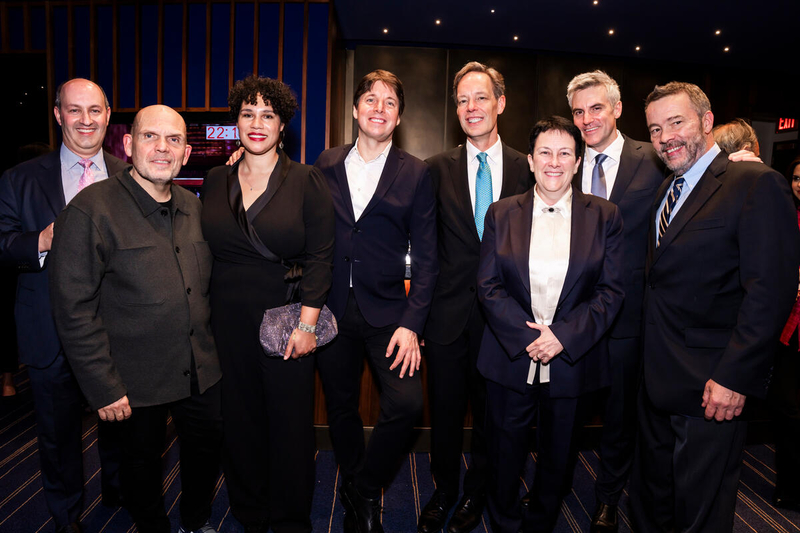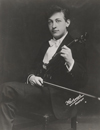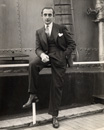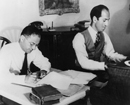Reviews
New Yorkers Brave the Elements for The Elements
In writing about what transpired on September 29 at David Geffen Hall in New York City, some allusion to calamitous conditions and nature’s fury feels obligatory: “Joshua Bell confronts The Elements—and so does his audience,” or something like that.
Torrential rain and flooding drenched an already saturated city on Friday night, crippling public transit for hours. This clearly had an impact on the first subscription-series concert of the New York Philharmonic season: how else to account for dozens of empty seats at a concert featuring a reliably charismatic superstar soloist, the lure of a premiere, and the grand opening of Music Director Jaap van Zweden’s farewell season?
What made this specific evening even more auspicious was the music Bell would play: not his standard polished, persuasive account of some canon-fodder concerto dispatched with sweet, singing tone and an incandescent smile, but instead the first local performance of a new piece. For all his youthful zeal and energy, Bell has rarely gotten involved with contemporary music; here, he would engage the fresh invention of not just one living composer, but five at once—with all of them present in the hall.

L to R: NY Phil CEO Gary Ginstling, Jaap van Zweden, Jessie Montgomery, Joshua Bell, Jake Heggie,
Jennifer Higdon, Kevin Puts, Edgar Meyer
The Elements, conceived and commissioned by Bell, is an aggregate construction along the lines of Liszt’s Hexaméron, a splashy showpiece that incorporated variations by Chopin, Czerny, and three other composers. The more obvious model, of course, is Vivaldi’s Four Seasons, a cycle of violin concertos bound by a central theme and consistent instrumentation.
Bell tapped five prominent American composers. Four were assigned the elements of Greek antiquity: “Earth” by Kevin Puts, “Water” by Edgar Meyer, “Fire” by Jake Heggie,” and “Air” by Jennifer Higdon. A fifth element, “Space,” was assigned to Jessie Montgomery.
Yoking together five disparate voices was a calculated risk. But Bell chose shrewdly, engaging individual creators who share a thorough command of craft, an unabashed embrace of lyricism and communicativeness, and a knack for evocative storytelling.
Puts opens “Earth” with a four-note ostinato for harp and strings—a Copland-esque gesture he used in his 2006 Violin Concerto—under a sweetly singing solo line that plays to Bell’s strengths. The music swells to robust proportions, solo lines and harmonies drifting toward ambiguity, then shifts into an upbeat second part driven by throbbing minimalist pulsations, before returning to its opening mood.
Meyer took a more literal approach in “Water,” deploying splashy cymbals and a rain stick alongside omnipresent rippling figures to evoke liquid sensations. A stormy climax evoked the surging tides and shimmering wave crests of Debussy’s La Mer.
For “Fire,” the most extroverted section of The Elements, Heggie fashioned irresistible sparks, flashes, and dancing whorls, punctuated with chattering snare drum, hissing cymbal, and glinting glockenspiel. In one especially appealing passage late in the movement, a solo bassoon and brooding low strings introduce a slinky theme the soloist takes up and whips into a demonic frenzy. Here and throughout, a listener was reminded of similarly enchanting fare by Saint-Saëns, Dukas, even Danny Elfman.
Higdon’s sophisticated ear for timbre was evident instantly at the start of “Air,” which played the solo violinist against a bowed vibraphone. Spacious and wistful, the music has a late-summer quality akin to Barber or, again, Copland. Bell made the utmost of its splendidly soaring solo part.
Confronted with representing “Space,” Montgomery conjured mystery with slow-swirling stellar clouds, and majesty with epic fanfare suited to a cinematic space opera. An arresting passage of solo violin fluttering weightlessly over a chiming celesta echoes Holst’s evocation of the unknown in The Planets. A final return to Puts’s “Earth” brings The Elements home with a rousing flourish.
A tumultuous extended ovation for performers and composers alike on Friday confirmed what was evident already: The Elements is a rousing success and a well-made delight, and Bell an ideal protagonist. Van Zweden was an alert, sympathetic companion, and the orchestra played beautifully throughout this evidently congenial assignment. How the complete work will fare without Bell's presence and advocacy remains to be seen, but its component movements seem destined to travel well individually. And without meaning to slight the music whatsoever, it’s not hard to envision some subsequent presentation involving immersive video.
Having heard Copland evoked in parts of The Elements, programming his Symphony No. 3 to conclude the concert made sense. But whether it was due to the orchestra still growing into to its refurbished hall, or to Van Zweden’s well-established propensity for loud, hard interpretations of big works—and despite luminous contributions from orchestra soloists—this latest traversal of a work commonly touted as the “Great American Symphony” had the hectoring quality of a campaign slogan. I can’t recall ever wishing more for earplugs to mitigate the confrontational blare.
Photo by Chris Lee





 FEATURED JOBS
FEATURED JOBS

 RENT A PHOTO
RENT A PHOTO


